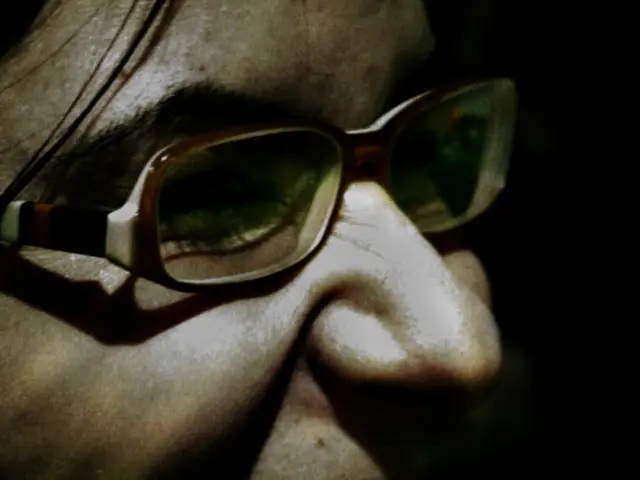Dreamscapes and Identity Fragmentation: A New Look into the Night
Research reveals relationship between dream irrationality and symptoms of dissociation
Who hasn't found themselves puzzling over those weird, strange, dream-world tales? But, what if the chaos and fragmentation of your dreams hint at deeper connections to your identity during wakefulness?
According to an innovative study published in Consciousness and Cognition, the structure of your dreams could give us clues about disassociation - that intriguing and often misunderstood psychological phenomenon where people feel distant from reality or their sense of self.
Here's the scoop: it's not just about what you dream, but how you dream.
This groundbreaking research shows that the coherence and narrative structure of your dreams can predict dissociative symptoms in your everyday life. Your dreamscape might be mirroring your mental health, one way or another.
In our ever-evolving mental health climate, his discovery isn't just mind-boggling; it's actionable. Imagine detecting early signs of disassociation through dream patterns, instead of relying on therapy or crisis intervention.
A Brief Primer on Disassociation
Disassociation involves interruptions in the integrated functions of consciousness, identity, memory, and perception. It manifests as:
- Depersonalization - feeling detached from your body or self
- Derealization - sensation that the world isn't real
- Identity fragmentation - experiencing multiple identities or struggling to keep track of who you are
It's frequently linked with trauma and PTSD, but also appears in those without obvious trauma histories. The mystery has always been why disassociation happens and what maintains it.
John Balch and his team, the engine behind this research, might have cracked that mystery open. Their study marked the first to examine whether dream characteristics serve as psychological signposts for disassociation.
Prior research hinted at a connection between REM sleep disturbances (e.g., nightmares, lucid dreams) and disassociative symptoms, but this new research plunges deeper, exploring dream content and narrative structures.
A Study That Digs into Your Subconscious
The research team recruited 219 participants from diverse demographics through online platforms. Each participant completed a set of psychological tests, including the commonly used Dissociative Experiences Scale (DES). Participants were later divided into two groups:
- High disassociation (DES score > 30)
- Low disassociation (DES score < 30)
A subset of these individuals participated in a two-week sleep and dream monitoring protocol. They wore EEG-equipped headbands to track REM sleep and maintained a daily dream diary.
After analyzing these entries, researchers focused on:
- First-person perspective in dream narratives (e.g., "I was running" vs. "A man was running")
- Logical narrative flow (whether the story made sense)
- Thematic continuity across multiple dreams
Dream Fragments, Shattered Selves
The findings? Astonishing.
Those with high disassociation reported:
- More distressing nightmares
- Greater frequency of lucid dreams and dream enactment behaviors
- Fragmented, non-linear dream narratives
- Less frequent use of first-person language
Essentially, their dreams were disorganized, non-sensical, and didn't feel personal. These dream traits correlated strongly with higher DES scores, suggesting that dream structure might reflect underlying disruptions in the self.
"Dream coherence - both within a single dream and across multiple nights - was predictive of disassociative tendencies," the researchers remarked.
This implies that our minds might be attempting to piece together identity during sleep, and when that process breaks down, it's reflected in both dreams and daily experiences.
A Different Spin on REM Sleep's Role
Usual wisdom considers more REM sleep (a stage associated with vivid dreaming) beneficial for mental health. However, this study challenges that idea.
Participants with higher disassociative traits didn't have less REM sleep. Rather, their REM periods were more fragmented and dreams lacked coherence. Additionally, they took longer to fall asleep, possibly due to fear of nightmares (dream avoidance behaviors).
This shifts our understanding: it's not about bedding down for as much REM sleep as possible; it's about how your brain makes use of that sleep time. If REM is designed to integrate memories and promote a stable self, then chaotic dreams may indicate a breakdown in that process.
Your Dream Journal Could Be a Psychological X-ray
For years, dreams have been dismissed as nonsense or symbolic mysteries. However, this study argues otherwise: dreams are windows into the mind's cohesion.
Imagine if mental health practitioners could use dream journals to:
- Track the progression of disassociative symptoms
- Assess the effectiveness of therapy
- Personalize sleep-based interventions
Therapies like lucid dreaming training, CBT for nightmares, or even narrative therapy could be used to strengthen the dream-self connection.
And this isn't just for clinical cases. Anyone who feels "off," disconnected, or struggles with emotional regulation might find insights in how their dreams unfold over time.
What This Means for Mental Health
This research paves the way for non-invasive, low-cost mental health diagnostics based on sleep and dream analysis.
It encourages the field to explore the multidimensionality of consciousness and how self-experience moves across these states. It also presents questions:
- Can dream coherence be trained or improved, like muscle memory?
- Are disassociative symptoms a cause or effect of REM disruption?
- How does trauma shape chaotic dream narratives?
Balch and his team remain optimistic. They suggest that dream-based therapies could be developed to enhance the sense of self, reduce fragmentation, and safeguard against future disassociation.
"These findings hint at a much deeper connection between identity and dreaming than previously acknowledged," they remarked.
What You Can Do Now
- Dream Journaling: Journal your dreams daily, taking note of the narrative, self-perception, and emotional impact.
- Examine Patterns: Keep an eye out for recurring themes, lucid dreams, and dream sequences, as these could be linked to disassociation.
- Improve Sleep Hygiene: Maintain a consistent sleep schedule and limit screen time before bed, as quality sleep supports more structured REM cycles.
- Seek Professional Guidance: If you frequently experience depersonalization, memory loss, or distressing dreams, consider a mental health evaluation.
- Learn Lucid Dreaming Methods: Some research proposes that lucid dreaming can improve dream coherence and decrease nightmare frequency.
In the study conducted by John Balch and his team, it was found that the structure of dreams can predict symptoms of disassociation in a person's everyday life, suggesting that their dreamscape may be a reflection of their mental health, particularly their mental-health-and-wellness and mental-health conditions such as depersonalization, derealization, and identity fragmentation. Furthermore, the coherence and narrative structure of dreams could serve as psychological signposts for disassociation, as those with high disassociation reported fragmented, non-linear dream narratives with less frequent use of first-person language, and more distressing nightmares and lucid dreams.








